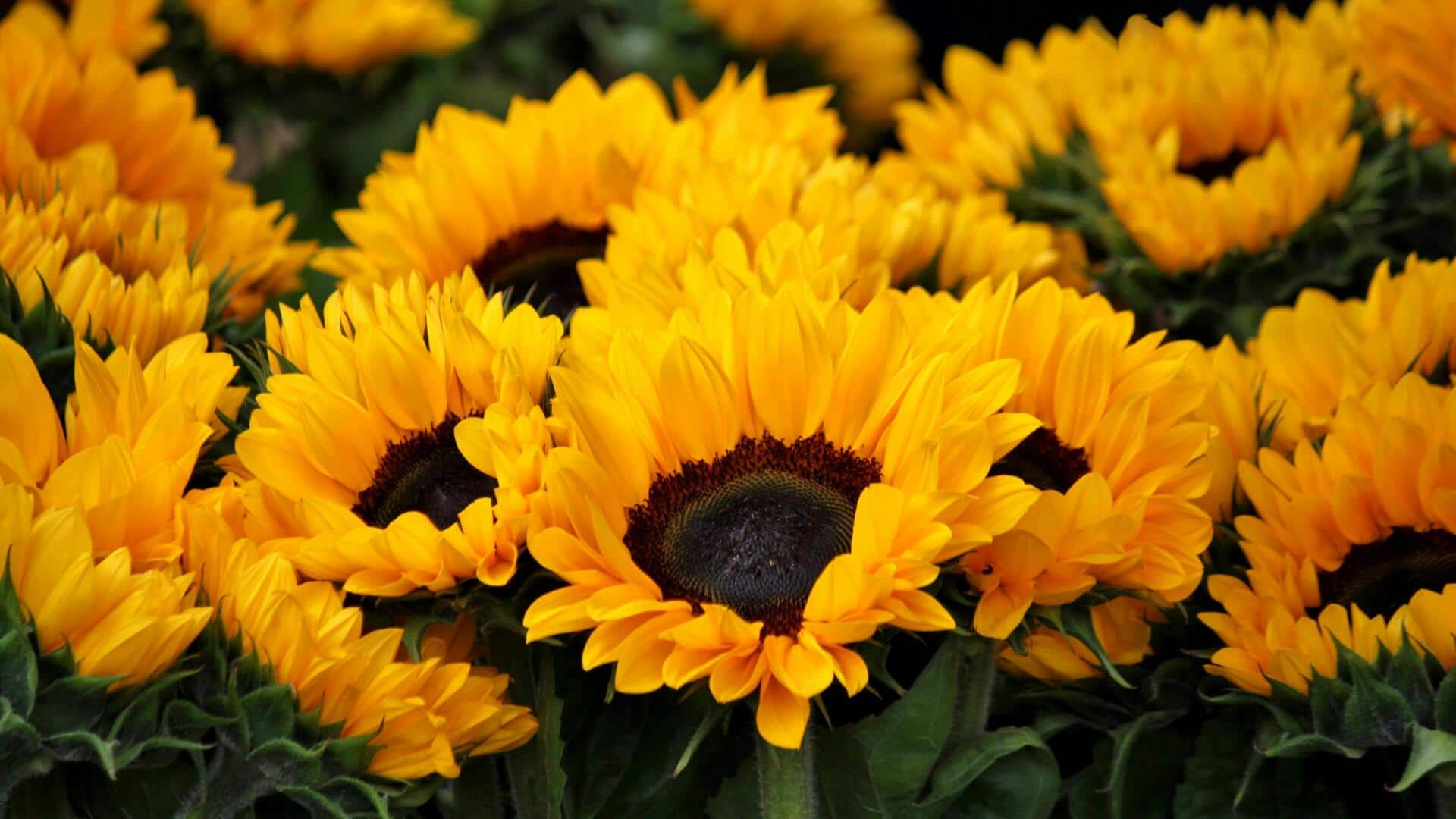
The secret to growing sunflowers indoors
What's the story
Growing sunflowers indoors can be a rewarding experience, especially when natural light is limited. These vibrant flowers can brighten up any space, and with the right techniques, you can cultivate them successfully indoors. This article provides practical insights into growing sunflowers indoors without the hassle of excessive natural light. By following these tips, you can enjoy the beauty of sunflowers all year round.
Tip 1
Choosing the right sunflower variety
Selecting the right variety is crucial for indoor growth. Dwarf sunflowers are ideal as they require less space and have shorter stems. Varieties like Little Becka or Teddy Bear are popular choices that flourish well in pots. These varieties typically grow up to 12-24 inches tall, making them suitable for indoor environments.
Tip 2
Optimal potting conditions
Proper potting conditions are essential for healthy sunflower growth. Choose pots that are at least six inches deep with drainage holes to prevent waterlogging. Use a well-draining potting mix enriched with organic matter to provide necessary nutrients. Ensure that the soil remains consistently moist but not soggy by watering regularly.
Tip 3
Artificial lighting solutions
Since natural light may be limited indoors, artificial lighting is key to growing sunflowers. Use LED grow lights positioned about 12 inches above the plants, providing 12-16 hours of light daily. This mimics natural sunlight and promotes photosynthesis, ensuring healthy growth and vibrant blooms.
Tip 4
Temperature and humidity control
Maintaining optimal temperature and humidity levels is imperative for indoor sunflowers. Keep indoor temperatures between 65 degrees Fahrenheit and 75 degrees Fahrenheit during the day and slightly cooler at night if possible. Use a humidifier or place water trays near plants to maintain humidity levels around 40%-60%. Regular care ensures your indoor sunflowers thrive beautifully over time without much hassle involved in maintaining them effectively throughout their life cycle stages.